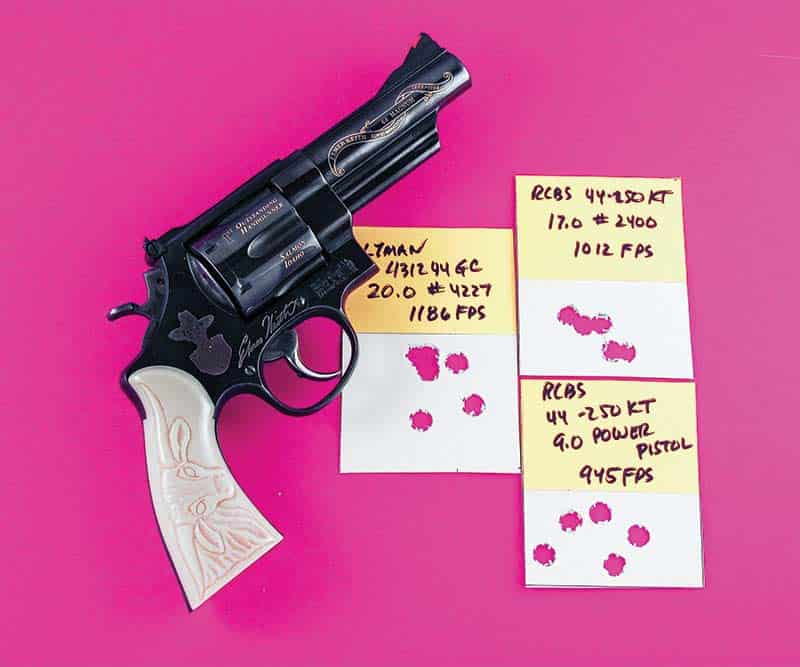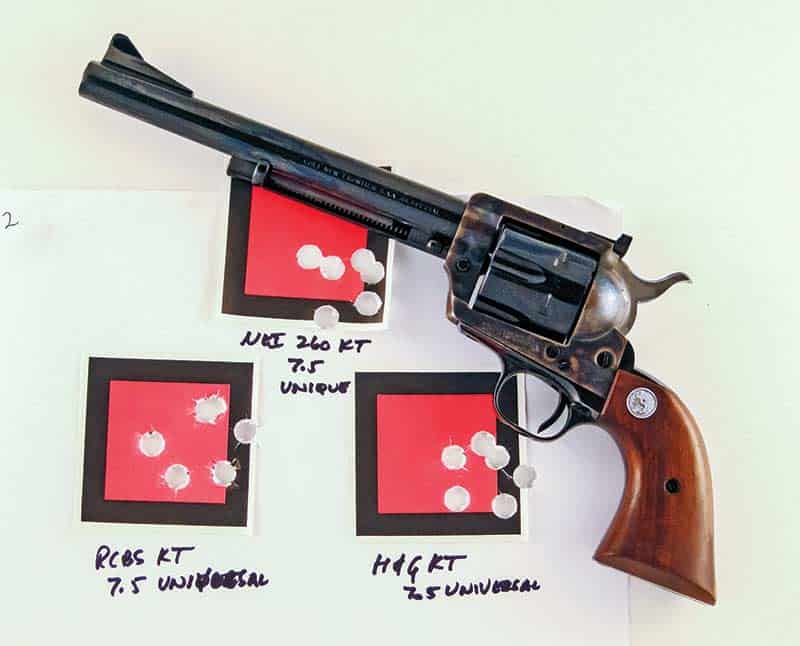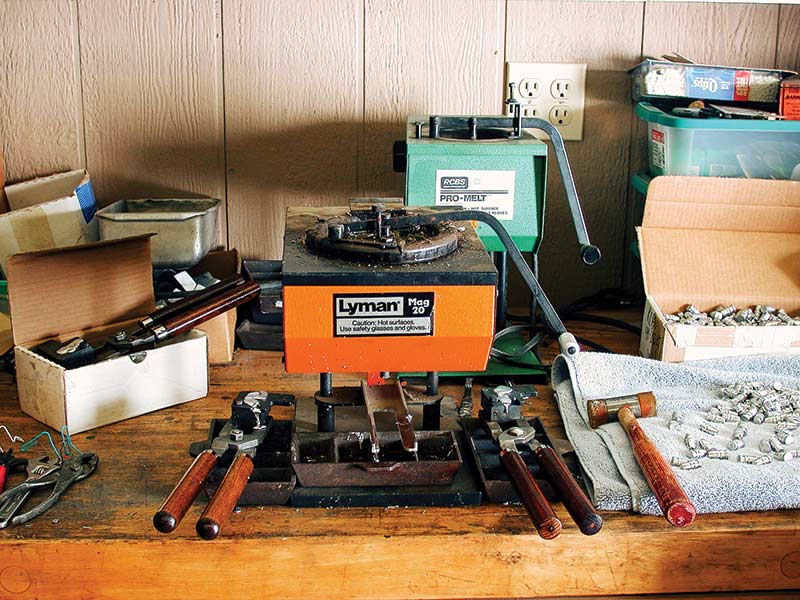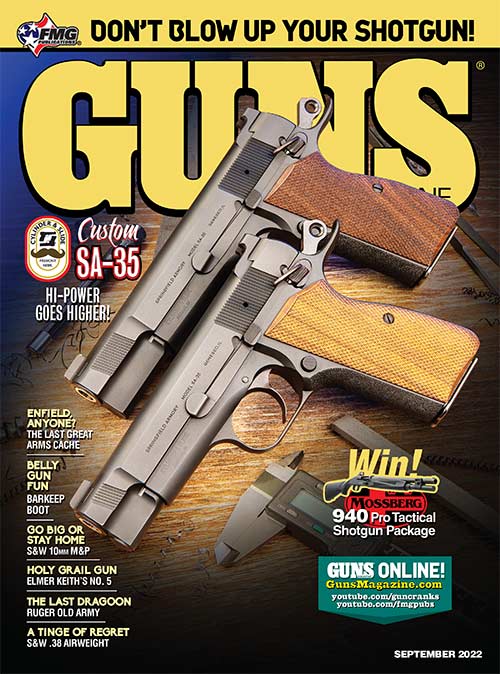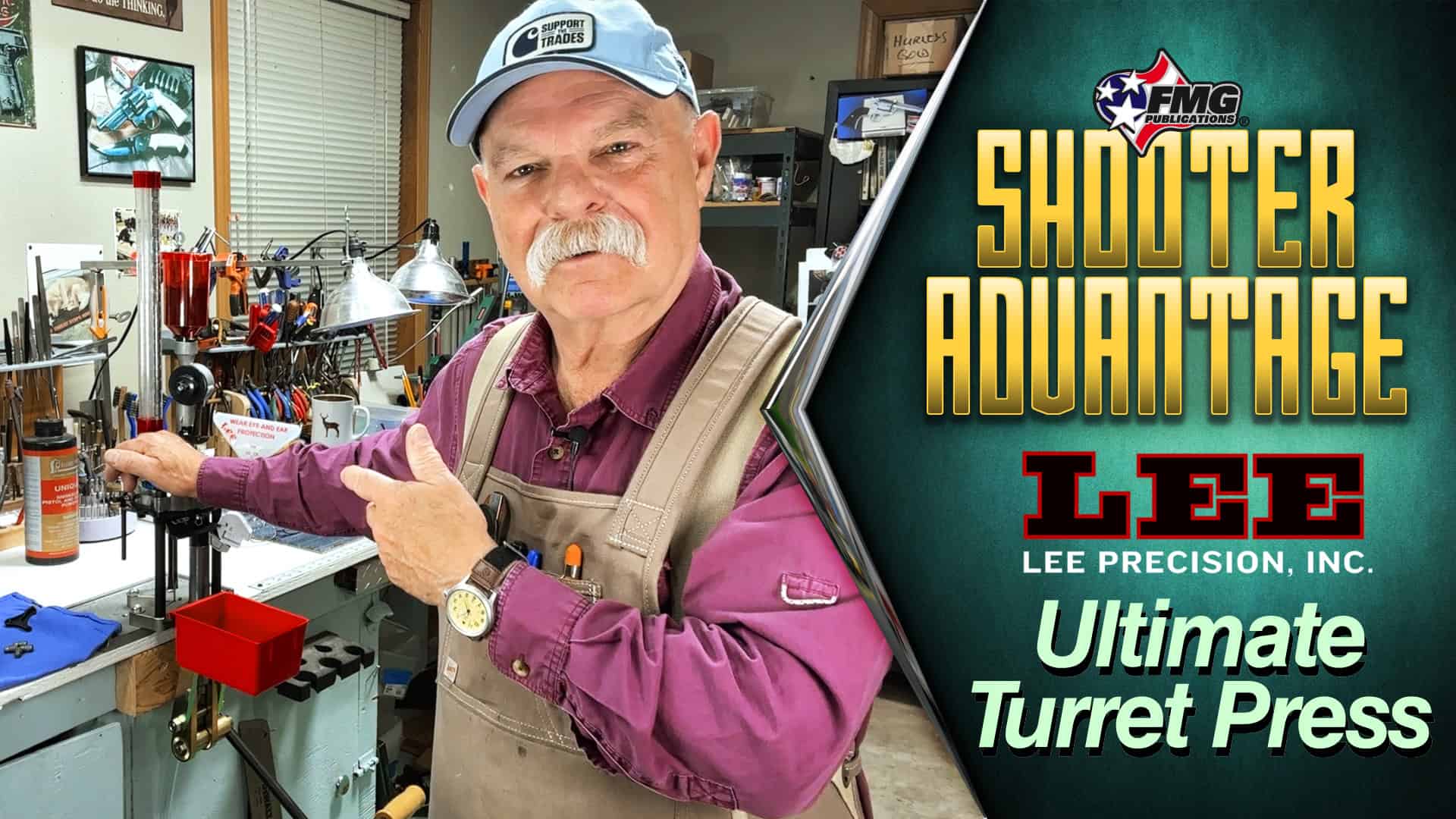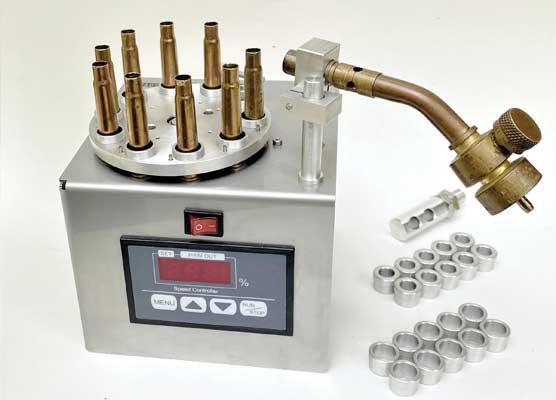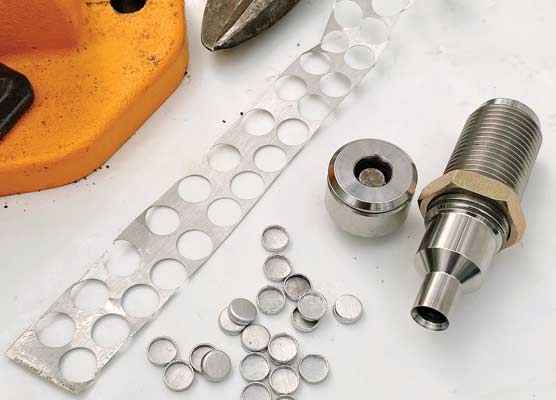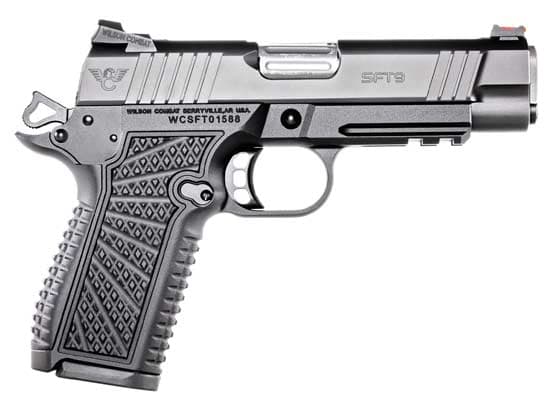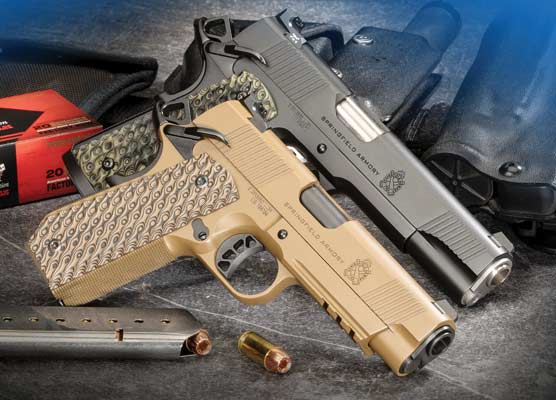Favorite .44 Bullets
Choices, Choices …
We are told there is no such thing as a magic bullet. Perhaps so; however, when it comes to the .44 Magnum there is one that comes almighty close. The bullet is Hornady’s 240-grain XTP-JHP. Black Hills uses this bullet in their .44 Magnum offering and at 1,350 fps it has certainly been magical for me. My 7-½” Freedom Arms Model 83 has never seen any other load except this one. In the hunting field it has taken 26 deer/deer-sized critters with 26 shots. Yes, all shots were very carefully placed — the three most important things in hunting are shot placement, shot placement and shot placement — and I was rewarded with perfect bullet performance. This same load was used in a 6″ Freedom Arms Model 83 to take a cougar from the top of a pine tree. He was dead when he hit the ground. I’d say 27 for 27 seems very magical to me. From the foregoing, it is not hard to figure what my jacketed bullet of choice is for reloads.
Keith, And The Rest
The cast bullet most preferred by me and thousands of other shooters is the “Keith” bullet for the .44 Special and .44 Magnum. This .44 bullet is probably the most recognized and also most used bullet when it comes to shooting .44s even though it has been nearly 90 years since Elmer Keith first designed it. He didn’t find it perfect the first time. Keith had tried several other designs before he hit on his improvement to a semi-wadcutter bullet, which had been designed by a man named Heath several years earlier.
Keith’s design calls for three equal-diameter driving bands, one forming the base, one in the middle of the bullet, and one to ride above the crimping groove and serve as a shoulder on the outside of the cartridge to true up the bullet in the chamber. In between the bottom and center driving bands, there is a generous grease groove and a deep crimping groove between the top and middle bands.
The design has been changed slightly over the years and in fact it often goes back to the original design, then changes, then back, to the point one really does not know which design is being offered without examining it. That being said, I have Keith designs from Hensley & Gibbs, Lyman, NEI and RCBS and when it comes to shooting I can’t find any differences accuracy wise. I have four- and six-cavity molds for the H&G bullet, two- and four-cavity Lyman molds, a four-cavity NEI aluminum mold, which is especially easy to use, and three two-cavity RCBS Keith bullet molds.
I keep a goodly supply of all of these on hand and sized from 0.429″ to 0.432″ for use in various .44 Special and .44 Magnum cylinders. The .44 Special cylinders especially can vary quite a bit from manufacturer to manufacturer and from manufacturing time period to manufacturing time period.
After more than 55 years of accumulating more than 300 bullet molds for just about every use imaginable, I don’t hesitate to say I use these .44 molds more than all the rest combined. And the majority of these .44 bullets are used in .44 Special single- and double-action sixguns. The older ones from the WWI era are usually charged with 6.0 grains of either Unique or Universal that duplicates the original Special loading while most of the others see 7.5 grains of the same powder as an everyday working load.
In The Field
For hunting, I normally go to the old standby #2400 with the charge that will give me about 1,150 fps. In the .44 Magnum, especially in my sixguns from the middle of the 20th century, I rarely load full-bore loads but rather go with 10.0 grains of Unique or Universal for around 1,100 to 1,150 fps, which is plenty powerful for my use.
If I really want to reach back into history, I use round-nosed bullets dropped from Lyman molds #429251 or #429383. They weigh around 250 grains and work fine in duplicating early .44 Special loads and also for loading the .44 Russian, the father of the .44 Special and grandfather of the .44 Magnum. These are the bullets I load over black powder for use in the old Smith & Wesson single-actions — the Model #3 Russian and the New Model #3 — and smokeless powder for use in the Navy Arms replica Model #3 Russian.
Ray Thompson must’ve really liked the .44 Special as he designed two different bullets for it instead of one as he did for the .38/.357 and .45 sixguns. When Thompson came up with his .44 bullets, the .44 Magnum had not yet arrived; however, they easily made the transition from use in the .44 Special into excellent bullet choices for the .44 Magnum. All of Thompson’s designs feature gas checks.
Gas checks add expense and time to the process of making our own bullets and Keith said they were unnecessary. Probably, except for the fact some .44s simply shoot better with gas check bullets; not that they shoot all that poorly with plain base bullets, they simply do their best with gas checks in place. A notable example is my Dan Wesson .44 Magnum.
Thompson’s Lyman bullets are #431215 and #431244. (Now cataloged by Lyman as #429215 and #429244.) The last three digits represent the weight of each one but my molds drop them at 222 grains and 255 grains respectively with my alloy. The lighter bullet is a great choice for high-speed loads in either the Special or Magnum while the heavier bullet is excellent for hunting. My heavyweight favorite for the .44 Magnum is also a gas-checked bullet and basically follows the Keith design. It is NEI’s #295.429 weighing just under 300 grains and when loaded over 21.5 grains of either H110 or WW296 makes an excellent choice for some of our tougher game.
